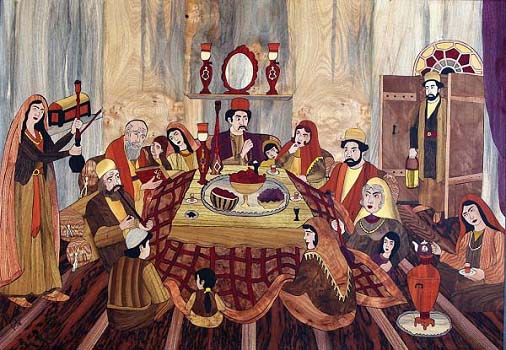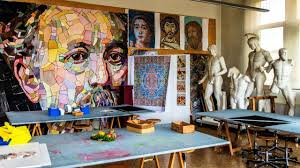Shabe Yalda a historical tradition in Iran, neighboring countries

Islamabad: December 21 is Yalda Night (the last night of autumn) as an important event in the Iranian calendar. This night is one of the most important historical traditions in Iran for the last 5,000 years and is celebrated in the region. Yalda is known as the night of light, sun and purity.
Yalda is actually the longest night of the year, and the next day the days lengthen and the nights shorten. In ancient times, the Iranians knew this as a victory of light over darkness.
On Yalda night, families gather at their parents ‘or grandparents’ house and eat special meals, fruits, snacks prepared for this night, read poems by Hafiz and Nizami Ganjavi.
Fruits such as pistachios, almonds, walnuts and dried fruits, watermelon, pomegranate and special nuts are on the table on Yalda night. Yalda night is a good opportunity for Iranians to come together with family and friends, renew friendships and strengthen ties.
Many holidays in Iranian history have been part of their culture, and that these holidays have been a symbol of their harmony with nature and their connection with others. In Iranian culture, human and happiness coexist, and the book Shahnameh emphasizes that if there is no happiness, wisdom will be weak. The national unity of Iranians is strengthen by these holidays. The field of Iranian civilization is not one people and one language, and they are all interconnected. It has brought us many messages, and these messages are passed down from generation to generation through Hafiz reading, Shahnameh reading, music and so on.

God is the basis of Iranian festivals and is worshiped everywhere. Iranian’s ancestors realized that the first night of winter is the longest night. Iranians are proud to provide valuable services to the human being by discovering the oldest and most accurate calendar and using the shapes of the planets.
The influence of Yalda customs on other peoples and cultures can be seen in historical books. Abu Rayhan al-Biruni is quoted as saying that the first year in the Sistani calendar is from December and the beginning of winter. The next day is the day of the sun, and now the first Christian day is Sunday (Sunday means the day of the sun).
Note that sometimes when we see cultural manifestations, we call it culture, for example, Novruz, or tangible and intangible heritage. However, culture is an abstract and formless issue. The tradition of Yalda is a cultural manifestation.
What are the features of Yalda? What are Yalda’s messages to humanity? Throughout its long history, Iran has faced many wars, earthquakes, social and economic problems and instability. But in spite of all these disasters, we are witnessing cultural sustainability and have maintained that hope.In Yalda, we pay attention to the light and sunrise on the longest and darkest nights, and this prevents a cultural break. We do not mourn in Yalda, but celebrate, that is, we pay attention to the attribute of the mirror, and this is a kind of self-knowledge. Yalda is a source of hope in Iranian society.
In other words, Yalda’s symbols, such as divination, pomegranate eating, reciting Persian poetries, being together, etc. has an inner meaning.
It should be noted that Yalda is connected not only with the geography of modern Iran, but also with the places of culture of Iranian civilization. At present, this tradition is recognized and celebrated in Azerbaijan, Uzbekistan, Turkmenistan, Pakistan, Afghanistan and other countries.





